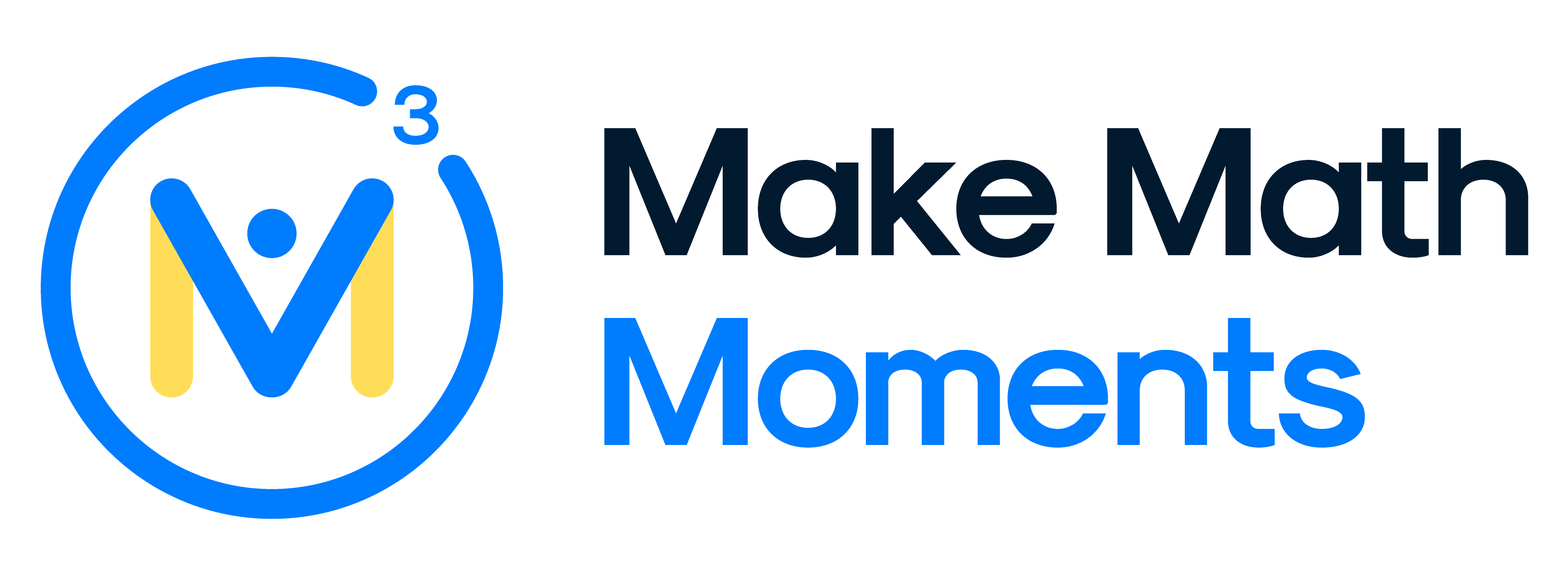Assessment For Growth
-
Module 1 - Clearing The Path For Assessment For Growth5 Lessons
-
Module 2: Formative assessment Techniques Your Classroom Needs5 Lessons
-
Lesson 2.1 Two Formative Assessment Techniques You Need To Stop Using - Part 1
-
Lesson 2.2 Two Formative Assessment Techniques You Need To Stop Using - Part 2
-
Lesson 2.3 Providing Feedback That Drives Learning Forward
-
Lesson 2.4 The Formative Five
-
Lesson 2.5 Problem Based Tasks as Formative Assessment Machines
-
Lesson 2.1 Two Formative Assessment Techniques You Need To Stop Using - Part 1
-
Module 3: Standards Based Grading For Growth7 Lessons
-
Lesson 3.1: Helpful vs. Unhelpful Grading Practices
-
Lesson 3.2: What Video Games Can Teach Us about Grading?
-
Lesson 3.3: Transitioning to Standards Based Grading – Choosing Big Ideas
-
Lesson 3.4: Transitioning to Standards Based Grading – Choosing Scales to Measure Growth
-
Lesson 3.5: How Can We Use Portfolios In Math Class?
-
OUTDATED Lesson 3.6: Setting Up a Portfolio Using Fresh Grade
-
Lesson 3.7: Setting Up a Portfolio Using Google Slides
-
Lesson 3.1: Helpful vs. Unhelpful Grading Practices
-
Module 4: Building Time for Assessment4 Lessons
-
Module 5: How to Help Key Stakeholders with Assessment For Growth7 Lessons
-
How Can I Help Students Who Have A Negative Predisposition Toward Math Class?
-
How do I help high school students with growth mindset?
-
Ep106: How To Influence System Change – A Math Mentoring Moment
-
How Do I Convince Colleagues to Change?
-
Ep 74: When Do I Nudge and When Do I Coach? A “Where Are They Now?” Math Mentoring Moment
-
Partnering With Parents in Elementary School Math - Matthew Beyranevand & Hilary Kreisberg
-
How do you handle push back from parents?
-
How Can I Help Students Who Have A Negative Predisposition Toward Math Class?
[Bonus Lesson] 10 Effective Strategies That Promote Learning Instead Of Labelling
Note: This lesson is a webinar replay from January 2019
Assessment and evaluation in traditional math classrooms that consist of assignments, quizzes, and unit tests that affix permanent grades in a mark book do not reflect new student learning or growth. Despite the many efforts of educators to promote student thinking and growth in math class, teacher beliefs and their traditional assessment actions do not align.
Join Jon Orr and Kyle Pearce as they unpack 10 assessment strategies that promote learning and thinking instead of labelling in math class. In particular, they will share their ongoing assessment journey including successes and challenges as they continue to align their assessment beliefs and actions in their math classes.
Make Math Moments Academy › Forums › Lesson 5: 10 Effective Strategies That Promote Learning Instead Of Labelling – Discussion
-
Lesson 5: 10 Effective Strategies That Promote Learning Instead Of Labelling – Discussion
Posted by Kyle Pearce on December 6, 2019 at 4:57 amWhat was your big take away from this particular lesson?
What is something you are still wondering?
Share your thinking below.
Teacher Leanne replied 3 years ago 22 Members · 28 Replies -
28 Replies
-
The strategy that was my biggest takeaway was using conversations and observations as assessment as well as tests and quizzes. I’ve never thought of doing that as more than participation points, which I don’t give any more. Now that I’ve heard the reasoning and description of how to do it, it makes a lot of sense.
-
I have a better overview of how to move from labeling students with a mark to helping them develop their growth mindset. There are numerous steps and I can see where I can make improvements in how I assess students. I really want to try the no mark, just feedback to see if this could encourage students to improve their understanding. I also intend to spiral classwork and assessments during this semester to see what difference that makes. Finally, I wonder how much more time this will take.
-
A big surprise for me was taking away test reviews, but it does make a lot of sense. I am interested in trying to restructure my next grade 8 unit on Algebraic Equations to have more assessments and no unit test.
But Kyle! Where do I get your check-in tasks, so lovingly laid out for feedback and corrections?
-
My biggest takeaway was right off the bat at #1. Five years ago when I was in the classroom, I thought giving students multiple ways of showing what they know is by retesting and giving the same assessment, but with different numbers. Being a “math person”, I wanted my gradebook to look nice and neat with no blanks. I wish I would have gotten over that back in the days so I could have given multiple methods for students to show what they know.
This is also something that I have difficulty getting through to my teachers I coach. What are the best ways to get co-workers joining in on this idea? How do I get them on board with providing multiple ways for students to show what they know?
-
I definitely need to put some thought into planning for assessment FOR learning. I love the ideas about multiple opportunities to demonstrate learning, and the feedback and corrections opportunities. Still need to figure out how to make this work within the confines of district mandates.
In the current coronavirus situation, I need to keep all this in mind as we completely shift our mode of instruction to online learning …with student choice.
-
3. Re-address struggles from tests and quizzes. I have done re-tests in the past, but will now be putting an end to that exercise. I will be using a variance between outcome based grading and what I use now, the standard tests, quizzes, assignments pattern, so that I can assess students ability to achieve an outcome through my observations and conversations.
-
I would like to share this information with adminstrators to help guide teachers in next steps. Assessment is a place we are ready to grow in being in the 4th years of adopting problem based curriculum.
-
I had two big takeaways:
First, that assessments and retakes can be conversations. Second, that cumulative assessments, without prior class review, are actually valuable for learning.
Thanks!
-
Deleted User
Deleted UserApril 29, 2020 at 3:25 pmMy biggest takeaway from this was #3: provide opportunities to re-address struggles from tests and quizzes. I think this is the strategy that I have always known was important because math is all about growth and connections, but never got quite right as a teacher. It was always a vicious cycle because I made it too difficult to keep up with and so I would get frustrated, give up, come back to, get frustrated, come back to…on and on and on. This strategy gave me a new perspective on what is important when reassessing and that is what is always most important, the students and their needs. I do not have to keep creating tests for them to retake if the focus is on the student’s area of struggle. Taking it one step at a time instead of recreating the assessment experience over and over again.
Many of our students are multiple grade levels behind and have significant gaps in their learning. My wonder is where do we start with students with huge gaps in learning? Do you focus on the grade level content or go back as you try to move forward?
-
Great take away and question about where to begin.
This is where low floor, high ceiling tasks are crucial because it helps you to determine where those struggles are for individual students and where you might begin.
Also remember that all content is connected; so while it might seem hard to “go back”, you’re just taking a few notches down the ladder. Understanding how the content develops is key to being able to do this with confidence and flexibility.
-
-
OVertime, I learnt to do small group lessons/ activities and i practise a “‘ notice and observe” my students while they are doing exemplars, give outright feedback. I do documentation of them at work and a sample of their work. I also tell them to do corrections so they are aware of their mistakes.
-
@maria-carmela-sanchez sounds like you’ve got a great program going!
-
yes. I am enjoying every bit of the courses here.
-
-
-
MY biggest takeaway is how to restart and to restructure my units, and moving away from review tests. I will continue using feedback, observations, and conversations to assess for learning. For the next school year, I will be moving to year 5 from year 3 just after a year.
-
Great ideas about assessment. Confirms some of the things I am trying to do. Thank you.
-
What I respond to is that assessment also has to change if our instruction changes and that does not always work well within a district. My district is accountable by the measure of a standardized test in the U.S. and wants consistency and measurability so there can be a numerical score to say yes everything is good here or no there is a problem. I think the greatest currency teachers have in the classroom is time. Eliminating reviews just grants more time for engagement, if you give up the campus competition and focus on instruction the state assessment scores will follow.
-
Agree. The tough part is finding those “holes” so you can do what you know works.
-
-
Big takeaway:
I have decided I need to redefine these words: Grade, Evaluation, and Assessment.
Grade: Letter that summarizes evaluation.
Evaluation: “Judgement” or conclusion you make after the assessment process. This will still be defined as a level: 1, 2, 3, 4.
Assessment: Continuous/Everyday. A tool used to push learning forward. Can be a produce, conversation, or observation. No levels assigned – just feedback that is concise, clear, and actionable.
-
I LOVE the idea that assessment is to help me help the students to push their learning forward! I need to make sure the students know this so they see the assessments as ways to be helped, not as ways to be punished.
-
I want to figure out how to use the standards and bridge this to how we report grades. I like the idea of it being on-going and dynamic; the stagnant, stuck-with-it grade seems ineffective and unforgiving. I work at a Christian school, and this stuck-in-stone-ness is not at all reflective of how God works with us either. Balancing grace/opportunity and accountability seems more real.
-
I had 2 big takeaways. The first is the idea of eliminating review days. I agree with this because if we’re spiraling there is no need to review. Why cram when we can give students multiple opportunities to show what they know about a concept throughout the whole year.
The other takeaway is to give students shorter and more frequent assessments. Instead of giving long tests, students can show what they know in a short focused question.
My wonder is how to best convert standards-based grading into letter grades because unfortunately we all have to. That’s part of the reason why I’m here!
-
I really like the idea of assessment being an ongoing thing. I also like the idea of giving students more control, so I am looking forward to seeing what is the best way to do that.
-
Fresh Grade looks amazing. Does it still exist? I am having trouble accessing it.
Log in to reply.


